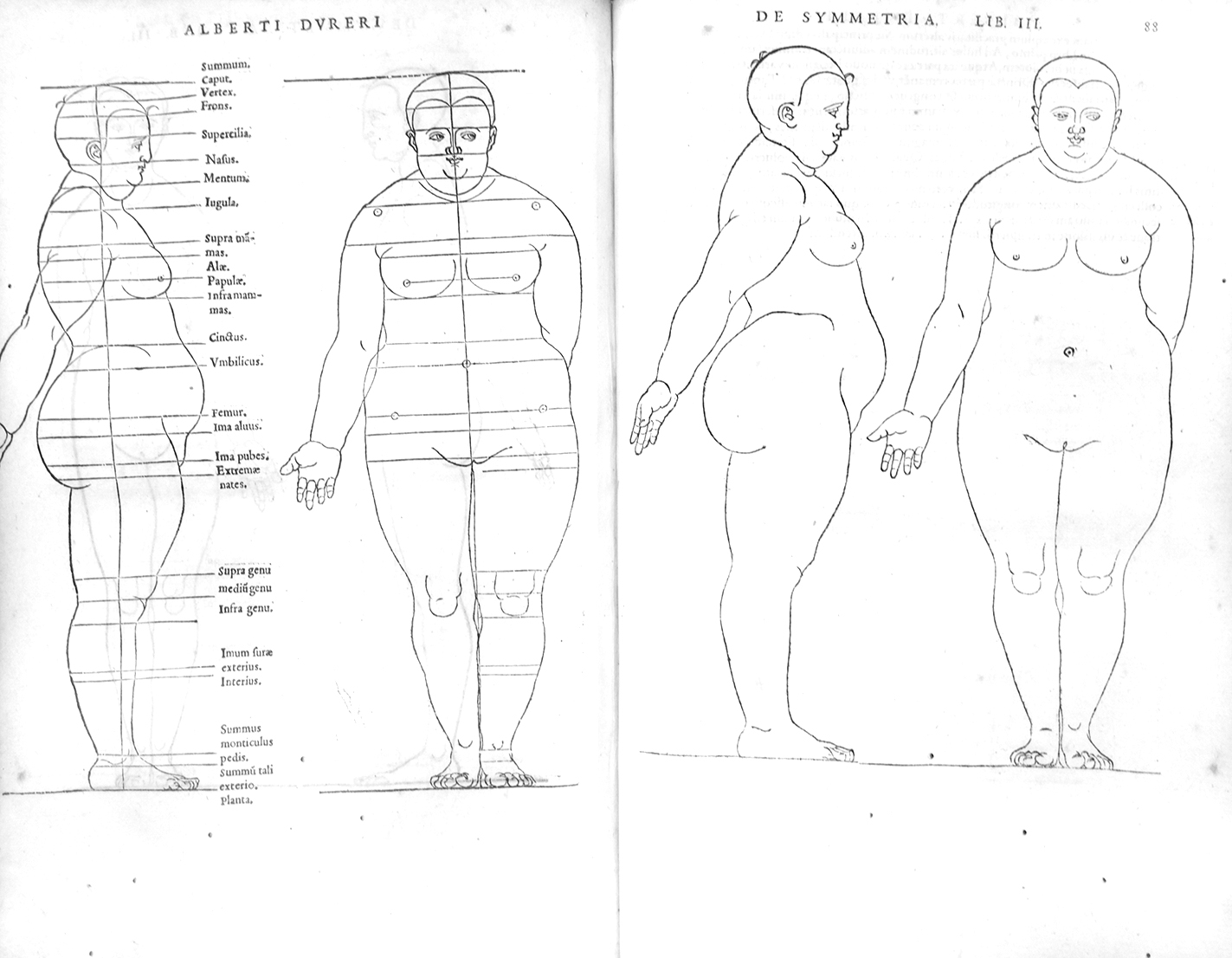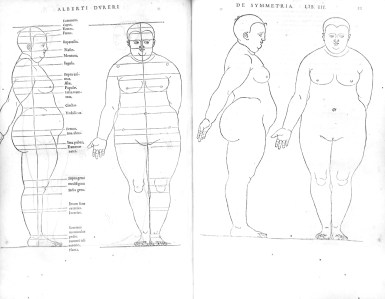DE SYMMETRIA PARTIUM HUMANORUM CORPORUM LIBRI QUATUOR, E' GERMANICA LINGUA, IN LATINAM VERSI.
in Officina Caroli Perier, Parisiis, 1557
In-4 p. (mm. 307x204), elegante legatura in p. pelle mod., cornici a secco e picc. decorazioni oro ai piatti, dorso a cordoni con fregi e tit. oro, 4 cc.nn., 122 cc.num. (di cui 4, ripiegate: n2 - r1 - r2 e v4 - sono segnate come singole ma contate come doppie nella numerazione). Il volume è ornato da una bella marca tipografica al frontespizio (raffigura un cavaliere su Pegaso nell'intento di trafiggere un drago con la lancia e, sullo sfondo, una città), da una pregevole testata e grandi iniziali a grottesche, ed è illustrato nel da 145 figure (corpi umani della grandezza della pagina), da alc. particolari (crani, mani e piedi) e da diagrammmi. Le interessanti illustrazioni sono copie delle silografie originali di Duerer della prima edizione tedesca, Norimberga, 1528. Celebrata ed importante opera.Cfr. Choulant, p. 143 e ss: "Albrecht Duerer (Nuremberg 1471 - 1528), like Leonardo da Vinci, wrote treatises on mathematics, chemistry, hydraulics, anatomy, and other scientific subjects.. He was one of the first artists in Germany who practiced and taught the rules of perspective, which he is said to have learned from Lucas von Leyden.. His book on human proportions was prepared for the press after his death by his lifelong friend Willibald Pirkheimer, and it appeared in October, 1528.. The work is divided into four books. The first two books treat of the proper proportions of the human form and its separate members, according to a constructed scale. He first divides the body into seven parts, each having the same measurement as the head, and he next considers the same divided into eight parts, giving also a separate consideration to the proportions of children. The woman, he considers, ought to be an eighteenth part shorter than man. In his proportions of the female figure he follows, perhaps unwittingly, the celebrated standard of the Venus de' Medici. In his third book he changes these proportions according to mathematical rule, and gives examples of ludicrously fat and thin figures, in which some one proportion is frightfully exaggerated. In the fourth book he shows the human form in movement, and treats especially of foreshortenings.. - Adams,I, p. 371 - Brunet,II,914 - Cicognara,319: nitidissima edizione. Leggerm. corto del margine super.; con qualche lieve alone e uniformi lievi ingialliture ma un buon esemplare.



